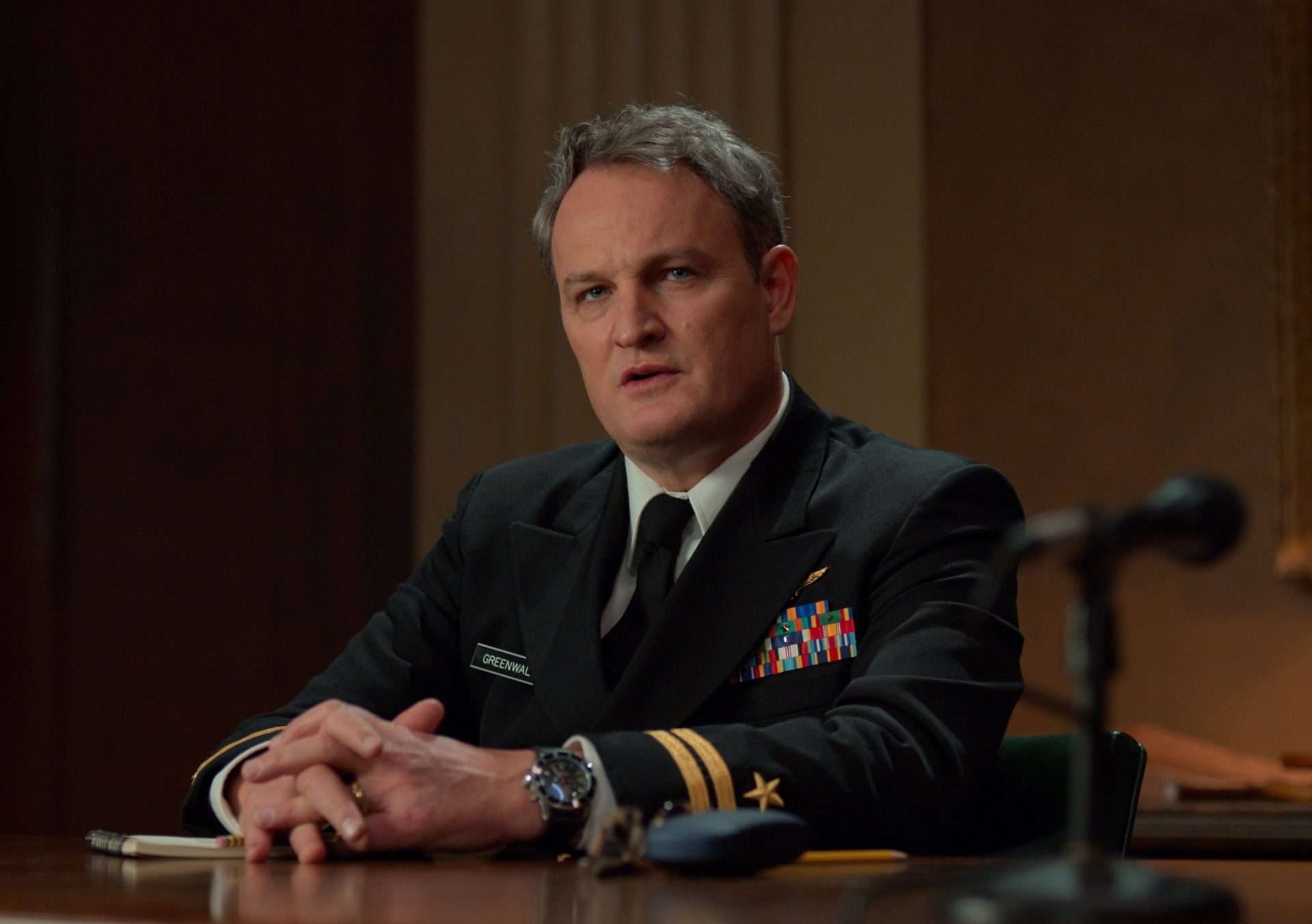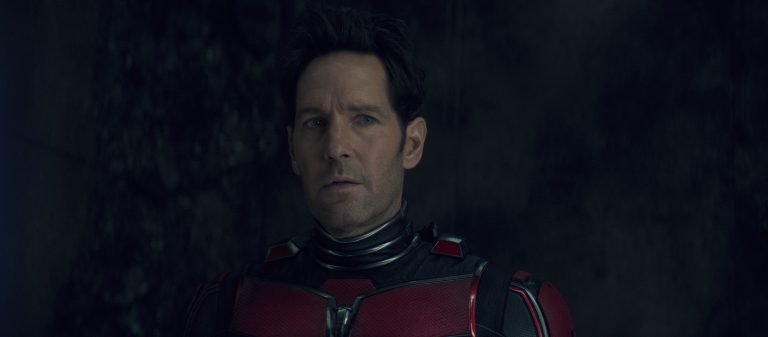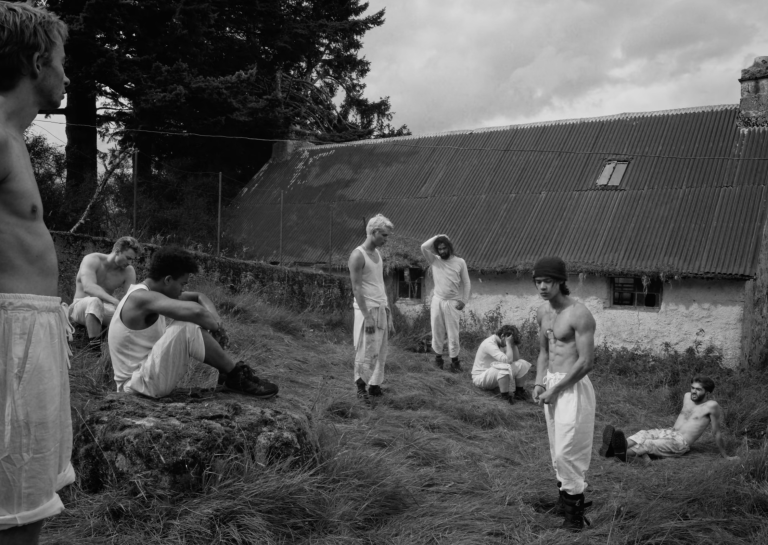The Caine Mutiny Court Martial (2023) Movie Review: If any director represented a singular decade, the 1970s would be personified by William Friedkin. The raconteur, responsible for giving us seminal masterpieces like “The French Connection,” “Sorcerer,” and “The Exorcist,” was known for his ultra-realistic, detail-oriented style of filmmaking as well as an inclination to show violence and intensity in as a raw fashion as could be humanly constructed. Friedkin implicitly valued verisimilitude and tried his hardest to bring that value system into his filmmaking.
To that extent, while Friedkin, in his later years, slowly moved away from filmmaking, it would be a crime to ignore his humble roots as a TV director for an anthology television series, be it an episode of the Alfred Hitchcock hour or a 1990 remake of “12 Angry Men”. Friedkin had also been one of the few filmmakers with an uncanny ability to adapt theatrical production to as cinematic or as closed-down an approach as possible without compromising on the intensity of the storytelling itself. His late-era accomplishments gave us unique films in the form of Bug (2006) and Killer Joe (2011), two adaptations of plays by the playwright Tracy Letts, which could also be coined as late-era masterpieces if one is being generous. Both are excellent films in their own right.
Thus, when William Friedkin passed away on August 7, 2023, the world lost an outspoken, original voice who managed to respect the whims and structure of the genre he would be playing without losing his own distinctive touch. The Caine Mutiny Court Martial marks not only the final directorial of William Friedkin but also the final appearance of the late Lance Reddick, and one might argue that it is a much more pared-down film than one expects.
Expectations unfairly skyrocket when a director’s final film is being studied, perhaps to witness and compare them with his accomplishments at their peak or to check from an academic perspective how much of his style has evolved. I suggest lowering those expectations because this movie almost makes a case for a dry procedural. One could argue that this could be an episode of “Law and Order,” and one wouldn’t notice the difference. Of course, that is an oversimplification.
In reality, this movie is more in line with Friedkin’s late-era success of limited-budget pared-down films like Bug and Killer Joe, simply because he is adapting a theatrical production—the 1953 play of the same name by Herman Wouk. The distinction is essential because the 1954 film “The Caine Mutiny” by Edward Dymytryk had been adapted from the book and thus explored the events in a more linear fashion, depicting the events on the naval ship USS Caine leading to the mutiny of the crew against their captain, LCDR Philip Francis Queeg (Humphrey Bogart).
On the other hand, the play was divided into two acts: the first depicts the events of the prosecution, and the second depicts the events of the defense. The relationship between the audience and the film thus already has a layer of hearsay attached to it because Friedkin doesn’t choose to fall into a flashback, instead letting the actors recite and react while being armed with robust and sharp dialogues to deliver, with the film completely limited only to the courtroom setting.

Thus being hermetically sealed, the movie follows the trial of Lieutenant Stephen Marryk (Jake Lacy), who is defended by skeptical defense attorney Lieutenant Barney Greenwald (Jason Clarke). Marryk is accused of leading a mutiny against Lieutenant Commander Philip Queeg (Kiefer Sutherland) when he forcibly wrestled control of the ship from Queeg on the grounds that the commander was suffering from mental instability. As the court-martial proceeds, both the defense attorney and the audience are led to wonder whether the captain truly is disabled or these are the acts of sailors who were unable to trust their leader in a crisis.
Friedkin, who wrote the teleplay, decided to update the setting from post-World War II to the modern-day War on Terror. There could be an argument as to why Friedkin chose to do that, especially considering how much the original story and play chose to comment on mental health, and other than a couple of ancillary additions to dialogue like “websites,” one could even argue that this movie didn’t require the update until the last moment.
Friedkin’s film thus squarely rests on the delivery of testimony and the cadence by which each actor enacts their scenes. These all become a showcase for actors like Jason Clarke, Kiefer Sutherland, and Monica Raymund. Raymaund, as Prosecutor Challee has the thankless role of being far more theatrical and showy in her performance to the point that it is noticeable, but it works in the context of her choosing to break ground and stand firm in the military and making her voice heard, especially from the side of the prosecution. As head judge Captain Luther Blakely, Lance Reddick brings that weighty gravitas so inherently familiar to his style of acting. He reminds you of Morgan Freeman in his delivery and cadence, almost voicing himself like the verdict of God, which he absolutely is considering the courtroom that becomes the world for the complete 108 minutes.
The protagonists, if there are distinctions as such to be made, are the standouts here, perhaps because of the inevitability of the story structure. Clarke is almost a regular now, with his turn in “Oppenheimer” playing the role of an attorney tasked with skewering the plaintiff at the witness stand. Sutherland’s portrayal, however, is where the movie gets interesting because he truly depicts the scope of a man completely flabbergasted by the barrage of questions thrown at him, a man using his exemplary service record as the character certificate. When that certificate is twisted and taken away from him, and his credibility is called into question, he breaks. But that break is not over-the-top or melodramatic; that break in cadence, the twisting of fingers, and the nervous tic of bringing the steel balls out of his pocket and playing with them are enough indications.
And while it can be argued that the movie never leaves the room, it doesn’t lose the engrossing aspect of its storytelling. Part of the reason is also about how Friedkin frames each of his characters with respect to their surroundings. Challee is framed against the row of judges, the camera confidently and slowly following her, while Greenwald is shot sometimes from low angles and sometimes with sharp cuts.
Marryk is always shot from the same level as the judges to show confidence that could almost be mistaken for arrogance, while the experts brought in are all shot from low angles until their credibility is called into question by the defense. At that moment, the camera looms over them as they are faced with logical questions they are unable to answer or have been tricked into answering.
The inverse occurs when the experts refuse to bow to the questioning and the angles of the camera refuse to change their perspective. But it is also how Friedkin directs the actors—the different tonalities, the varied cadences—that brings in a sense of interest in a very stagey production. But of course, what helps is the complete lack of any background score that emphasizes any of the twists and turns in the tale. It also lets the viewers voice out their own thoughts in private as if they were also part of the panel of judges.
“The Caine Mutiny” at the end attempts to comment by letting the character of Greenwald deliver a monologue describing the perspective of all these career officers who have the potential to turn into Queegs, thus commenting on the young bucks like Marryk choosing to criticize them with such a harsh status. From the perspective of World War II, where the story had been set, it reads as the writer mentally scolding and placating himself from turning against authority and reading as a positive affirmation of patriotism. From the perspective of the audience, it pulls the rug out, completely admonishing them of judging throughout the entirety of the movie or the play.
However, because it is Freidkin, his updating the timeline to a world post-9/11 and thus deploying the minefield that is the coda of the play to the film itself further muddies the waters. It dares to distinguish and differentiate between the soldiers who enlisted after 9/11 (“to drop bombs in the Middle East,” as voiced with eloquent bitterness by Greenwald) and career soldiers who have risen through the ranks. Through that, it dares to ask about the generational gap and the nature of war. One might argue with the politics that this scene ultimately unearths in the end, but even in his final film, Friedkin provokes and asks questions of the audience. He doesn’t dare; he remains the same, irrespective of how we feel. And thus, in his final film, his career comes full circle.









